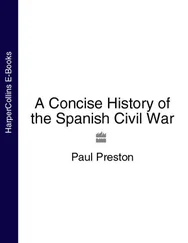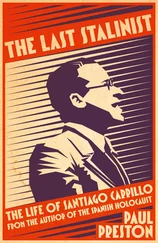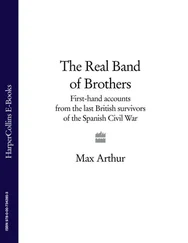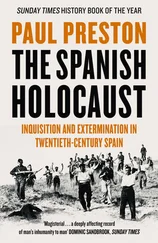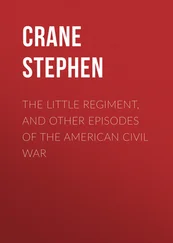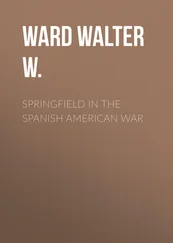The rise of republicanism persuaded some elements within the PSOE, notably the young Asturian journalist Indalecio Prieto, of the need for the establishment of liberal democracy and they therefore fought for an electoral alliance with middle-class Republicans. Prieto had seen in Bilbao that, alone, the Socialists could do little, while, with the Republicans, they could secure election success. His advocacy of a Republican-Socialist electoral combination in 1909 opened up the long-term prospect of building socialism from parliament but also brought him into conflict with other leaders such as the UGT vice-president Francisco Largo Caballero, who advocated a strategy of confrontational strike action. Republican–Socialist collaboration would be the basis of eventual PSOE success. Indeed, Pablo Iglesias himself was elected to parliament in 1910. However, Prieto had earned the lifelong hostility of Largo Caballero, whose rancour would bedevil his existence and, eventually, have devastating consequences for Spain.
Another Republican movement that seemed to be threatening the system was the brainchild of the outrageous rogue Alejandro Lerroux. Born in Córdoba, Lerroux started his adult life as an army deserter after squandering his military academy fees in a casino. As a journalist he leapt to fame in 1893 by dint of an inadvertent victory in a duel with a newspaper editor. His exposés of the Montjuich tortures gained him a popular following. His skills as a demagogue gave him the leadership of a mass Republican movement in the slums of Barcelona and his ability as an organizer built a formidable electoral machine. It was revealed that he was receiving money from the central government, common practice in a period when politicians paid for the inclusion or suppression of news in newspapers. This gave rise to the widespread belief that his rabble-rousing in Barcelona was a Madrid-inspired operation to divide the anarcho-syndicalist masses and undermine the rise of Catalan nationalism. Probably no government slush fund could have achieved what he did. To become ‘Emperor of the Paralelo’, the Barcelona district where misery, criminality and prostitution held sway, required more genuine appeal than anything that could be conjured up in Madrid offices. This was achieved largely by the near pornographic techniques of anti-clerical demagogy in which he enjoined his followers, the ‘young barbarians’, to murder priests, sack and burn churches and ‘liberate’ nuns. Lerroux tapped into the profound anti-clericalism of immigrant workers. For them, the Church was the defender of the brutally unjust rural social order from which they had fled.
The first decade of the twentieth century therefore tasted an explosive cocktail of intransigence, on the part of landowners and industrialists, and subversion from a disparate array of Socialists, anarchists, Radicals, moderate Republicans and regional nationalists. It was a period in which rapid but sporadic industrialization and partial labour organization coincided with major post-imperial trauma. A resentful army disappointed in Cuba turned inwards, determined not to lose further battles, and became obsessed with the defence of national unity and the existing social order. Accordingly, the officer corps was increasingly hostile both to the left and to the regional Nationalists who were perceived as ‘separatists’. Right-wing, centralist and constantly needled by the Catalan anti-militarist press, in November 1905 the army shook off its immediate post-war shame with an assault by three hundred officers on the premises of the satirical journal ¡Cu-cut! and the Catalanist newspaper La Veu de Catalunya , during which forty-six people were seriously injured. To appease the army, the government introduced the Law of Jurisdictions which deemed that any criticism of the army, the monarchy or Spain itself would result in the perpetrators being tried by the military justice system. It was a dangerous step in the process whereby the officer corps came to consider itself the ultimate arbiter in politics. Moreover, the Spanish army was not prepared merely to be the defender of a constitutional regime whose decadence it despised. It hoped to find a solution in a new imperial endeavour in Morocco, made possible by British desires for a Spanish buffer against French expansionism on the southern shores of the Strait of Gibraltar. However, woefully unprepared, the new adventure stimulated massive popular hostility against conscription, thereby intensifying the hatred of the military for the left. At the same time, after 1905 Lerroux began to lose support precisely because of the fierce sincerity with which he revealed his pro-militaristic and centralist abhorrence of Catalanism.
The volatility of the situation was revealed by the events known as the Semana Trágica which took place in Barcelona in July 1909. The colonial disaster of 1898 had fed widespread working-class pacifism and ensured that, unlike France or Britain, Germany or Italy, Spain could not use imperialist adventures to divert attention from domestic social conflict. Spain’s Moroccan entanglement was popularly regarded as the narrow personal undertaking of the King and the owners of the iron mines. In 1909, the government of the conservative Antonio Maura, under pressure from both army officers close to Alfonso XIII and investors in the mines, sent an expeditionary force to expand Spain’s Moroccan territory to encompass some important mineral deposits. Large numbers of reservists, mainly married men with children, were called up and embarked from Barcelona. Untrained and ill-equipped, the Spanish army was in the throes of being defeated by the Rif tribesmen at the battle of Barranco del Lobo. There were anti-war demonstrations in Madrid, Barcelona and cities with railway stations from which conscripts were departing for the war. A general strike broke out in Barcelona on 26 July. The Captain-General of the region decided to treat it as insurrection and declared martial law. Barricades were set up and anti-conscription protests escalated into anti-clerical disturbances and church burnings. The movement was put down with the use of artillery. Numerous prisoners were taken and 1725 people were subsequently tried, of whom five were sentenced to death. In military eyes the repression was necessary because the disturbances had connotations of anti-militarism, anti-clericalism and Catalan separatism. In this sense, during the Semana Trágica the hostility between the military and the labour movement prefigured the violent hostilities of the civil war.
The Semana Trágica certainly took Spain a step further towards the conflicts of the 1930s in terms of developments within the anarchist movement. Lerroux’s pro-militaristic stance had exposed the fraudulence of his radicalism and saw the bulk of his ‘young barbarians’ drift towards anarchism. In the autumn of 1910, a variety of anarchist groups united to form an anarcho-syndicalist trade union known as the Confed-eración Nacional del Trabajo (CNT). The new organization rejected both individual violence and parliamentary politics, opting instead for revolutionary syndicalism. This involved a central contradiction which would hinder the organization throughout its existence. On the one hand, it would act as a conventional trade union defending the interests of its members within the existing order while at the same time advocating direct action to overthrow that system. The involvement of its members in violent acts of industrial sabotage and strikes meant the new organization was soon declared illegal.
Surprisingly, however, when the next explosion came it was precipitated not by the rural anarchists or the urban working class but by the industrial bourgeoisie. Nevertheless, once the crisis started, proletarian ambitions came into play in such a way as to ensure that the basic polarization of Spanish political life became starker than ever. The geometric symmetry of the Restoration system – with political power concentrated in the hands of those who also enjoyed the monopoly of economic power – already under pressure, was shattered by the outbreak of the First World War. Not only were political passions aroused by a bitter debate about whether Spain should intervene and on which side, accentuating growing divisions within the Liberal and Conservative parties, but massive social upheaval followed in the wake of the war. The fact that Spain was a non-belligerent put her in the economically privileged position of being able to supply both the Entente and the Central Powers with agricultural and industrial products. Coal mine owners from Asturias, Basque steel barons and shipbuilders, Catalan textile magnates all experienced a wild boom which constituted the first dramatic takeoff for Spanish industry. The balance of power within the economic elite shifted somewhat. Agrarian interests remained pre-eminent but industrialists were no longer prepared to tolerate their subordinate political position. Their dissatisfaction came to a head in June 1916 when the Liberal Minister of Finance, Santiago Alba, attempted to impose a tax on the notorious war profits of northern industry without a corresponding measure to deal with those made by the agrarians. Although the move was blocked, it so underlined the arrogance of the landed elite that it precipitated a bid by the industrial bourgeoisie to carry through political modernization.
Читать дальше



